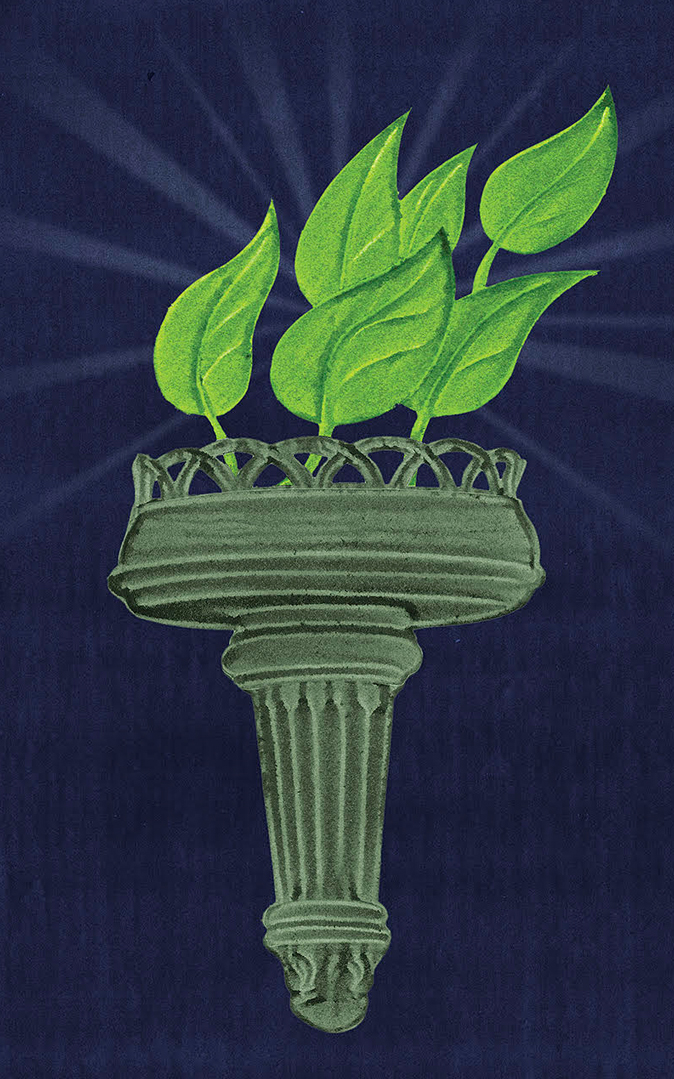A Vision for Our Best America
Frontline and vulnerable communities are key to the Green New Deal
Sierra Club Executive Director Michael Brune
By 1933, the United States was almost four years into an unprecedented economic and environmental crisis. Half of the nation's banks had failed. More than 20 percent of the population was out of work. Poor farming practices had turned once-fertile land into a barren dust bowl.
The newly elected president, Franklin Delano Roosevelt, had promised action, and he delivered. FDR's "new deal for the American people" included both groundbreaking legislation and bold executive orders. He wasn't content to just fix the nation. He wanted to transform it: "We are going to make a country in which no one is left out."
Nearly 90 years later, we're facing problems that FDR would find all too recognizable (a growing number of people being left behind) and others beyond anything he could have imagined (irresponsible and reckless policies in the face of catastrophic climate change). But if Roosevelt were running for president in 2020 (oh, how I'd love to see him take on Donald Trump), you can be sure he'd have a vision not only for addressing our crises but also for lifting our nation nearer to the ideals of justice and equality on which it was founded.
Such a vision for America does exist. You've probably heard about it: The Green New Deal was first introduced as a resolution in the House and Senate by Representative Alexandria Ocasio-Cortez and Senator Ed Markey. In just 14 pages, it sets clear goals for federal action on climate change, environmental justice, and economic inequality. And it lays out how we can achieve those goals with "unprecedented levels of prosperity and economic security for all people of the United States."

The Green New Deal is intended as a guide to inform future policy, but it doesn't shy away from naming specific actions, such as repairing and upgrading US infrastructure, retrofitting buildings for energy efficiency, helping communities build resilience to climate-change-related extreme weather, restoring ecosystems, and meeting 100 percent of our power demand through "clean, renewable, and zero-emission energy sources." It's been both lauded for its boldness and criticized (by the usual suspects) for being too ambitious. In truth, the Green New Deal simply pushes for what science and common sense tell us will be necessary in the coming decade to avoid disaster: a national mobilization to transition to an equitable, clean energy economy.
The most visionary aspect of the Green New Deal, though, is its insistence that the policies enacted to achieve its goals be developed from the ground up and with the participation of "frontline and vulnerable communities and workers."
That's important, because it's become increasingly obvious that climate change and economic and environmental inequality are closely linked. The same working-class families and communities of color affected by low wages and toxic pollution are also getting hit hardest by superstorms, wildfires, and flooding. We cannot successfully tackle either climate change or inequality without addressing both. The Green New Deal must deliver on a broken promise of the original New Deal, which, owing to the institutionalized racism of Jim Crow, failed African American families (for instance, by not extending FDR-era protections to agricultural field hands or domestic workers, who were often black).
The Trump administration, of course, envisions a different journey for the United States–one that would take us in exactly the wrong direction and leave multitudes behind. Resisting that agenda is important work, and we're not about to let up. But it's also essential that we look beyond the disastrous policies of the present and define success for the policies of the future. The Green New Deal is an attempt to create not just a better America than what our current leadership allows but the best America.
This article appeared in the May/June 2019 edition with the headline "A Vision for Our Best America."
Illustration by Alex Nabaum
 The Magazine of The Sierra Club
The Magazine of The Sierra Club



